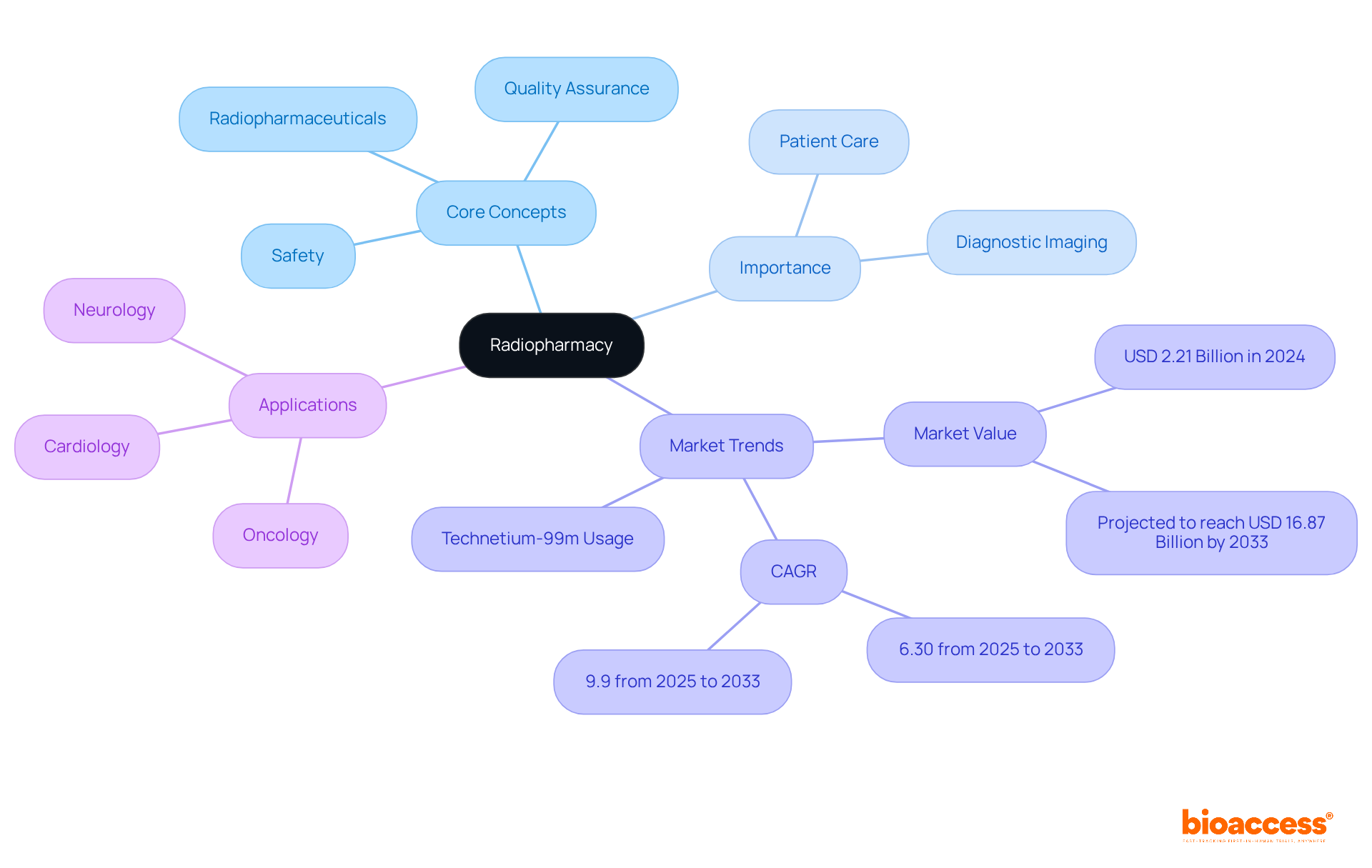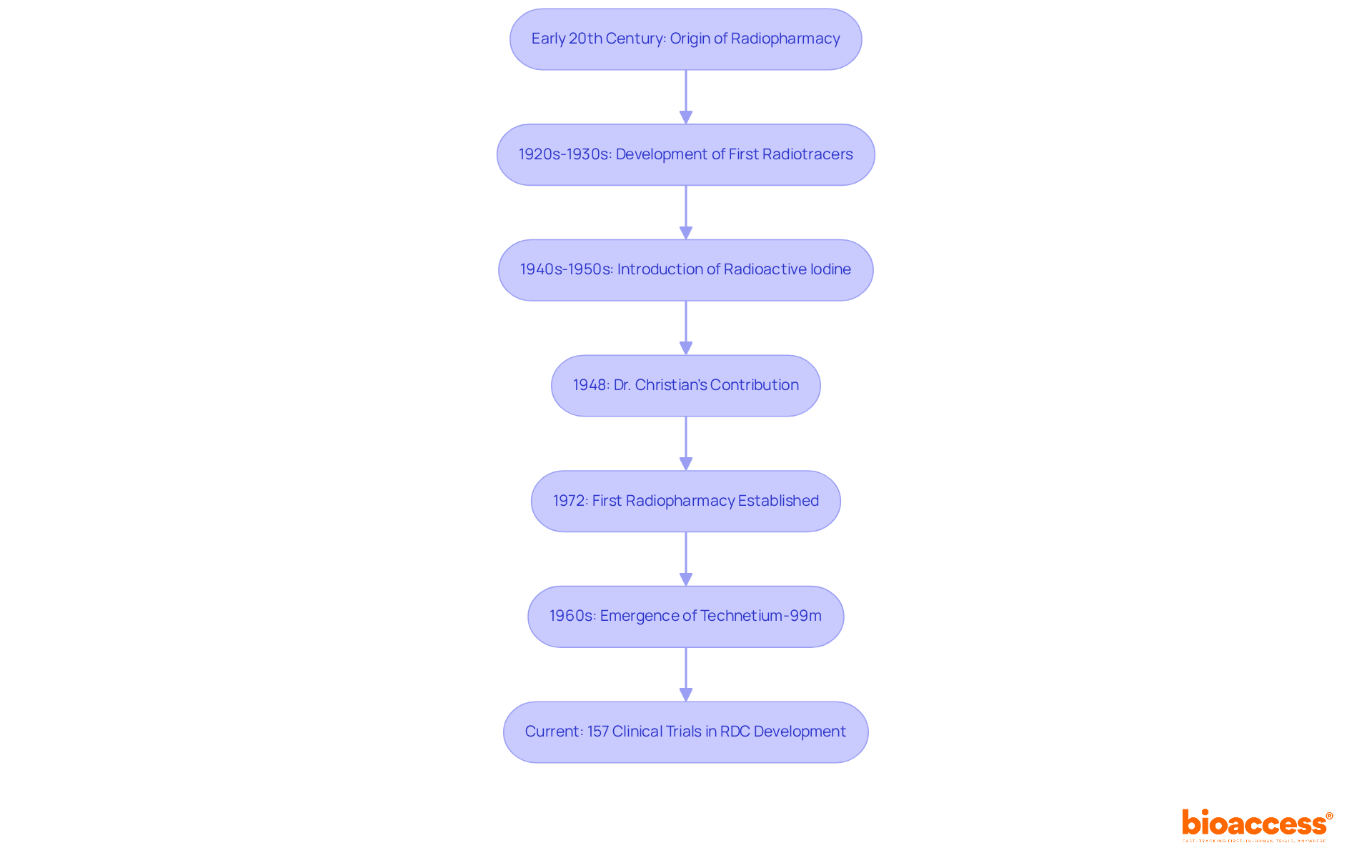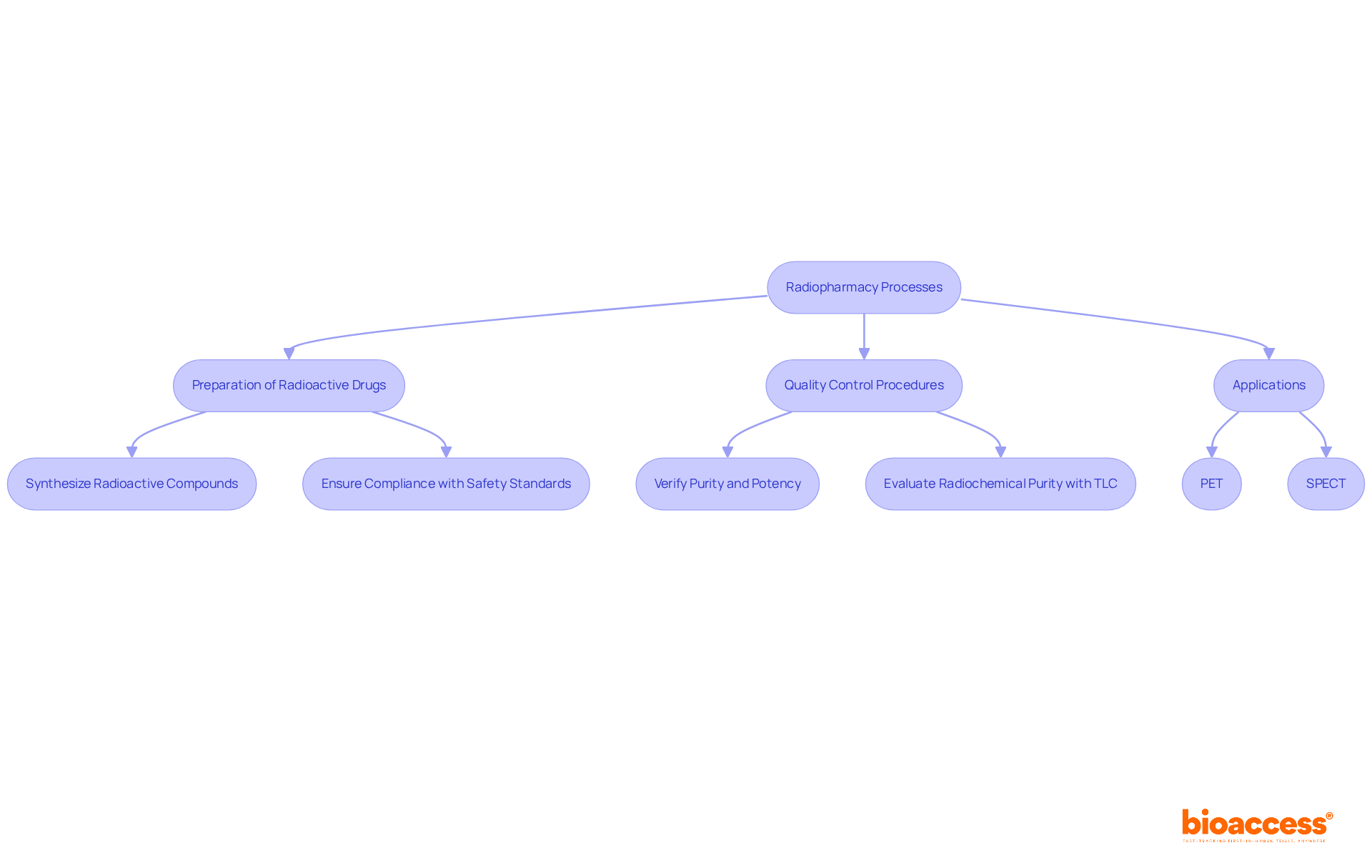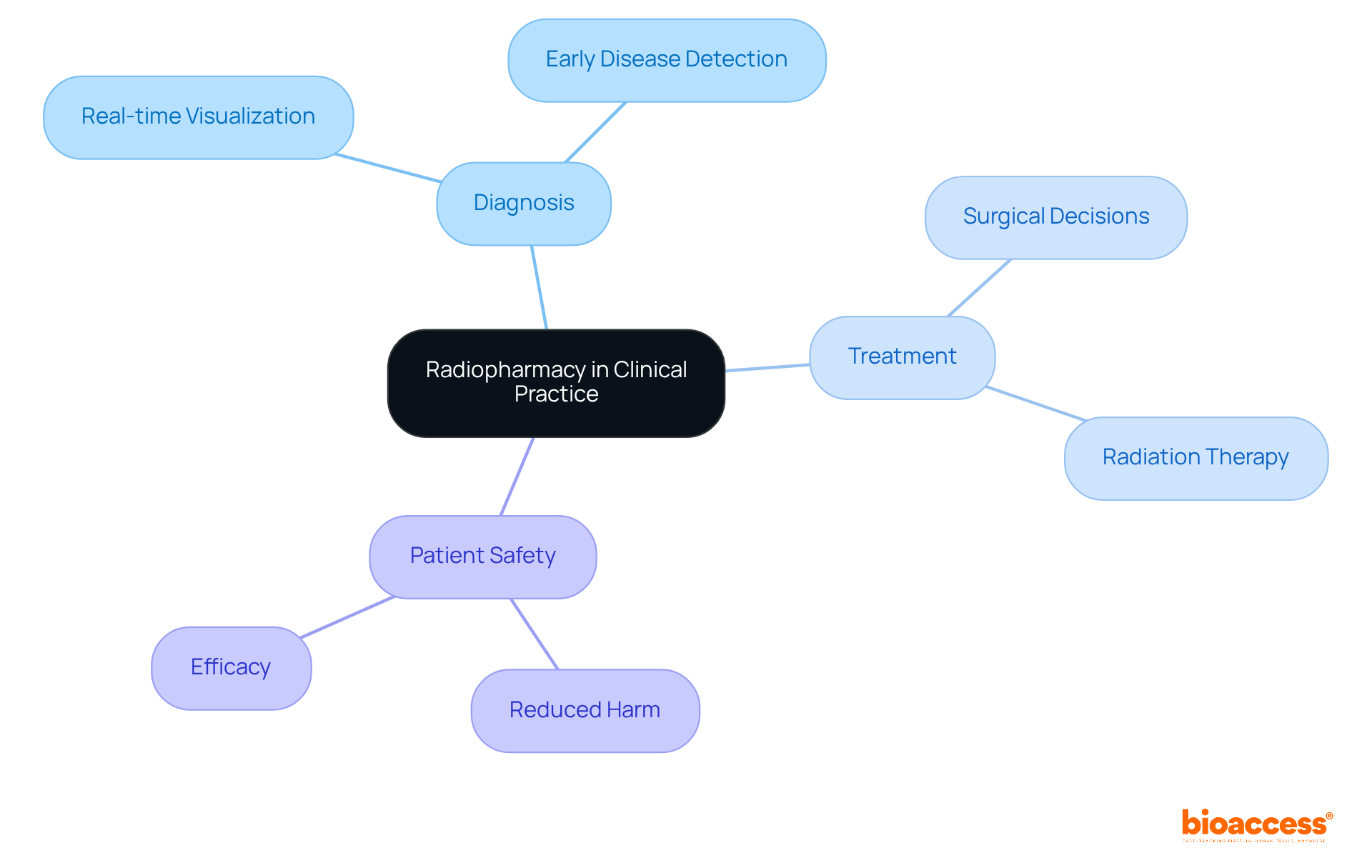


Radiopharmacy, also known as nuclear pharmacy, represents a specialized domain dedicated to the preparation, quality assurance, and dispensing of radiopharmaceuticals for diagnostic and therapeutic applications in nuclear medicine. This field is pivotal in enhancing patient care through precise diagnostic imaging and targeted treatments. Historical advancements and current trends in precision medicine underscore the expanding role of radiopharmaceuticals in modern healthcare, reflecting its critical importance in clinical research.
Radiopharmacy stands at the forefront of modern medicine, seamlessly blending the complexities of chemistry, technology, and healthcare to enhance patient care through the use of radioactive pharmaceuticals. This specialized field not only facilitates groundbreaking diagnostic imaging and targeted therapies but also plays a crucial role in the evolution of precision medicine. As the demand for advanced medical solutions grows, it prompts us to consider:
Radio pharmacy, also known as nuclear pharmacy, represents a specialized domain committed to the preparation, quality assurance, and dispensing of radiopharmaceuticals—medications that incorporate radioactive isotopes. These agents are predominantly utilized for diagnostic imaging and therapeutic interventions within the realm of nuclear medicine. The significance of radio pharmacy is underscored by its ability to enhance patient care through the safe and effective application of these radioactive substances, which provide critical insights into organ and tissue function while specifically targeting diseases, particularly cancers. This discipline, known as radio pharmacy, exists at the intersection of chemistry, medicine, and technology, ensuring that radioactive drugs are not only prepared but also administered with the utmost safety and efficacy.
Current trends indicate a growing emphasis on precision medicine, with specialized drugs increasingly playing a pivotal role in personalized treatment strategies. For instance, the U.S. market for radioactive pharmaceuticals was valued at USD 2.21 billion in 2024 and is projected to expand at a CAGR of 6.30% from 2025 to 2033. Moreover, Technetium-99m is widely recognized for its application in medical evaluations, underscoring the practical impact of radio pharmacy on patient outcomes. As the demand for precise diagnostics rises, the integration of advanced imaging techniques and the development of novel therapeutic compounds are transforming patient management and outcomes in clinical settings. According to the IMARC Group, the diagnostic nuclear medicine segment significantly contributes to the U.S. radio pharmacy market share, emphasizing the critical role of these agents in modern healthcare.

The evolution of radio pharmacy science is pivotal to understanding its relevance in clinical research today. Originating in the early 20th century, significant advancements emerged during the 1920s and 1930s with the development of the first radiotracers. The field gained substantial momentum in the 1940s and 1950s, marked by the introduction of radioactive iodine for treating thyroid conditions, representing a crucial milestone in therapeutic applications. In 1948, Dr. Christian underscored the application of radioactive isotopes in pharmacy research, emphasizing the early recognition of the field's significance. The establishment of the first radio pharmacy in 1972 at the University of New Mexico formalized the discipline, paving the way for standardized practices and regulations.
As the decades progressed, radio-pharmaceuticals evolved alongside advancements in nuclear medicine, incorporating innovations in both diagnostic methods and therapeutic applications. A landmark development occurred in the 1960s with the emergence of Technetium-99m, which became fundamental in imaging techniques, enhancing the capabilities of radio pharmacy. This evolution has solidified the field's integral role in contemporary healthcare, significantly improving assessment precision and treatment efficacy. Currently, the United States leads with 157 clinical trials in radionuclide drug conjugate (RDC) development, underscoring the critical importance of radiopharmaceuticals in clinical research. Dr. Baker noted that progress in mid-20th century nuclear medicine greatly enhanced diagnostic precision and range, contributing to the development of essential instruments in modern healthcare.

Essential elements of radio pharmacy encompass the meticulous preparation of radioactive drugs, rigorous quality control procedures, and the secure delivery of these agents to patients. The preparation process entails synthesizing radioactive compounds that comply with stringent safety and efficacy standards, thereby ensuring their reliability for clinical use. Quality assurance protocols are vital for verifying the purity and potency of radioactive pharmaceuticals prior to distribution, with a radiochemical purity (RCP) of at least 90% serving as a standard benchmark for acceptable products.
As we look to 2025, the landscape of quality assurance in radioisotope pharmaceuticals is poised for evolution, with advancements in methodologies such as thin-layer chromatography (TLC) proving effective in evaluating radiochemical purity. These innovations are essential for preserving the integrity of radiopharmaceuticals, particularly given the short half-lives of many agents, which demand timely quality assessments.
The applications of radio pharmacy are extensive, prominently featuring examination techniques such as positron emission tomography (PET) and single-photon emission computed tomography (SPECT). These modalities have showcased significant efficacy in clinical practice, enhancing diagnostic accuracy and facilitating real-time monitoring of treatment responses. For instance, PET scans utilizing fluorine-18 radiotracers have become indispensable in evaluating various physiological functions, while SPECT techniques are crucial for assessing myocardial perfusion and identifying malignancies.
The integration of robust quality assurance practices and advanced imaging methods ultimately results in improved patient outcomes, underscoring the pivotal role of radio pharmacy within modern healthcare.

Radio pharmacy is integral to clinical practice, equipping healthcare professionals with essential tools for precise diagnosis and effective treatment. Radiopharmaceuticals empower clinicians to visualize physiological processes in real-time, facilitating early disease detection and personalized treatment plans.
For example, radiotracers used in PET scans can pinpoint cancerous tissues, influencing surgical decisions and radiation therapy. Moreover, the targeted nature of radiopharmaceuticals reduces harm to healthy tissues, thereby enhancing the safety and efficacy of treatments.
As precision medicine evolves, the significance of radio pharmacy in optimizing patient care becomes increasingly paramount, highlighting its critical role in contemporary healthcare.

Radiopharmacy is a pivotal field within modern healthcare, dedicated to the preparation and application of radiopharmaceuticals that enhance diagnostic imaging and therapeutic interventions. This discipline not only bridges chemistry and medicine but also plays a crucial role in advancing patient care through the safe and effective use of radioactive substances. The growing recognition of radiopharmacy underscores its contribution to personalized treatment strategies and improved patient outcomes via precise diagnostics and targeted therapies.
This article has explored key concepts such as the historical evolution of radiopharmacy, its core processes, and its applications in clinical practice. From its early beginnings with the development of radiotracers to the establishment of rigorous quality assurance protocols, the field has experienced tremendous growth. Innovations like Technetium-99m and advanced imaging techniques such as PET and SPECT have transformed disease diagnosis and treatment, highlighting the essential role of radiopharmacy in contemporary healthcare settings.
The ongoing advancements in radiopharmacy not only underscore its critical role in diagnostics and treatment but also emphasize the necessity for continued research and development in this area. As the demand for precision medicine escalates, integrating radiopharmaceuticals into clinical practice will be vital for enhancing patient safety and treatment efficacy. By embracing the potential of radiopharmacy, significant improvements in patient care can be achieved, making it imperative for healthcare professionals to remain informed and engaged with the evolving landscape of this vital field.
What is radiopharmacy?
Radiopharmacy, also known as nuclear pharmacy, is a specialized field focused on the preparation, quality assurance, and dispensing of radiopharmaceuticals—medications that contain radioactive isotopes.
What are the primary uses of radiopharmaceuticals?
Radiopharmaceuticals are primarily used for diagnostic imaging and therapeutic interventions in nuclear medicine, providing insights into organ and tissue function and targeting diseases, especially cancers.
Why is radiopharmacy important in healthcare?
Radiopharmacy enhances patient care by ensuring the safe and effective application of radioactive substances, which are crucial for accurate diagnostics and targeted therapies.
What is the current market trend for radiopharmaceuticals?
The U.S. market for radioactive pharmaceuticals was valued at USD 2.21 billion in 2024 and is projected to grow at a compound annual growth rate (CAGR) of 6.30% from 2025 to 2033, reflecting an increasing emphasis on precision medicine.
What role does Technetium-99m play in radiopharmacy?
Technetium-99m is widely recognized for its application in medical evaluations, highlighting the significant impact of radiopharmacy on patient outcomes and diagnostics.
How is radiopharmacy contributing to personalized medicine?
Radiopharmacy is integral to personalized treatment strategies, as it supports the development of specialized drugs and advanced imaging techniques that enhance patient management and outcomes in clinical settings.
What segment significantly contributes to the U.S. radiopharmacy market?
The diagnostic nuclear medicine segment plays a significant role in the U.S. radiopharmacy market, underlining the importance of radiopharmaceuticals in modern healthcare.